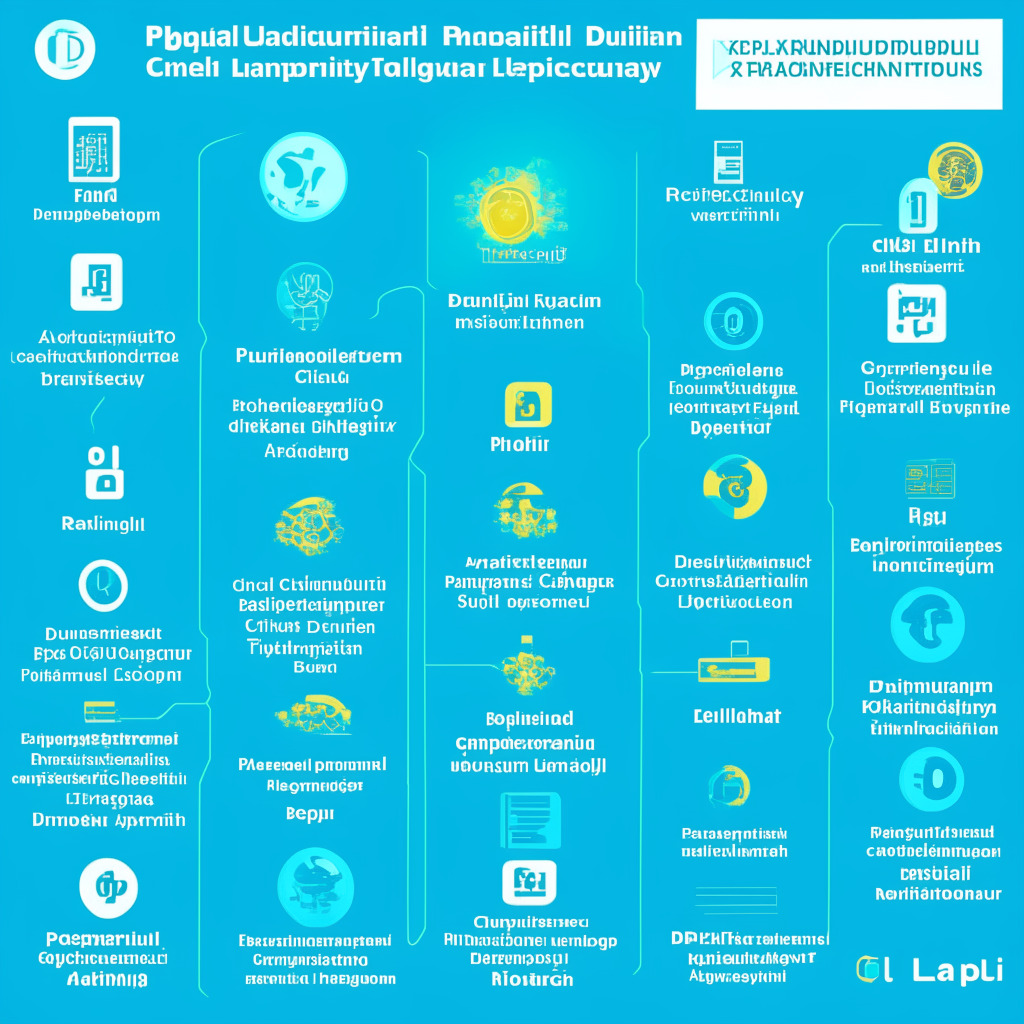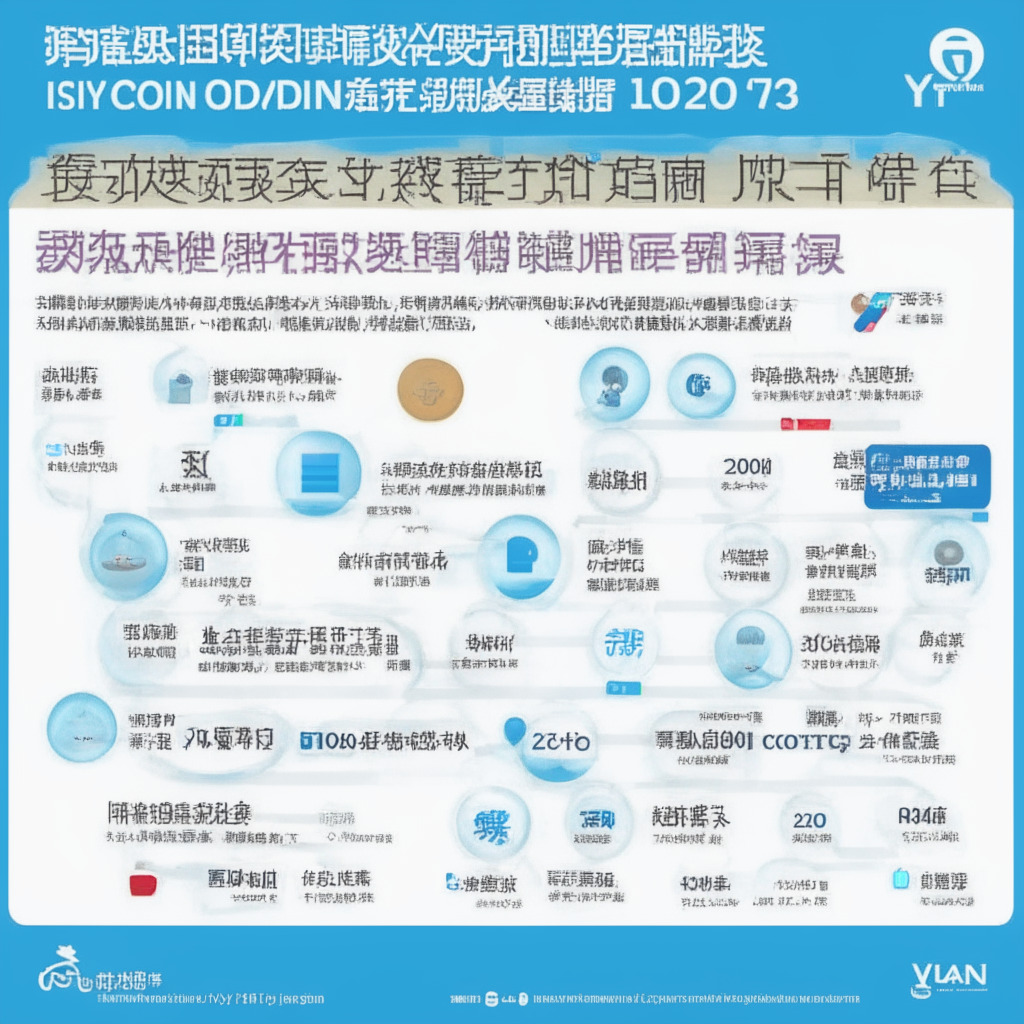This article explores factors indicating a potential Bitcoin consolidation breakout, highlights President Biden’s budget proposal addressing digital assets, and discusses Robert Kiyosaki’s optimism on Bitcoin as protection against economic uncertainty. It also examines technical levels and the potential for a bullish reversal. Stay informed and adapt to the ever-changing crypto market environment.
Search Results for: EAK Digital
Bitcoin’s Symmetrical Triangle Formation: Potential Breakout or Breakdown on the Horizon?
The cryptocurrency market is closely monitoring Bitcoin’s symmetrical triangle pattern, which could indicate a potential breakout in the near future. Bitcoin currently faces significant resistance around the $27,250 level, and key technical indicators suggest the possibility of a breakout above this level. Examining patterns and indicators can help investors make informed decisions while managing the inherent risks in this volatile market.
Marathon Digital’s Strategy in Bear Market: Navigating Price Protection and Energy Efficiency
Marathon Digital Holdings navigates bear market with a price protection strategy and increased hash rate, achieving a quarterly record of 2,195 BTC mined. The company’s energy-efficient fleet and foreign partnerships, like the joint venture in Abu Dhabi, help position it for ongoing expansion.
RFK Jr.’s Bitcoin Campaign Donations: Breaking Barriers or Courting Controversy?
Democratic presidential candidate Robert F. Kennedy Jr. announces he will be the first to accept Bitcoin campaign donations, emphasizing its link to democracy and freedom. Critics argue potential drawbacks include lack of regulation, anonymity, and market instability affecting donation value.
Exploring Bitcoin-Based NFTs: DIBA Marketplace, RGB Smart Contracts, and the Future of Digital Assets
DIBA, a new marketplace for exchanging Bitcoin-based non-fungible tokens (NFTs), offers trading on layer 2 networks like the Lightning Network. Using “Really Good for Bitcoin” (RGB) smart contracts, DIBA aims to enable cheaper, more private transactions and simplify token issuance on Bitcoin.
Whampoa Group’s Digital Bank in Bahrain: Innovating Finance or Destabilizing Tradition?
Singapore-based Whampoa Group plans to launch a digital bank in Bahrain, offering services such as digital asset trading, custody, and management. With backing from influential families and Bahrain’s Central Bank’s conditional approval, this development signals a push toward financial innovation, accessibility, and the growing adoption of digital banking services.
Bitcoin’s Bullish Breakout Amid US Debt Ceiling Standoff and Inflation Fears
Despite ongoing market uncertainties, Bitcoin margin and futures markets indicate a potential bullish breakout, with its primary resistance level at $27,500. Global inflationary pressures and the U.S. debt ceiling standoff may contribute to Bitcoin’s digital scarcity as an attractive alternative investment. Traders maintain a cautiously bullish stance as Bitcoin’s market structure appears favorable.
Digital Asset AML Act: Regulating Crypto or Hindering Blockchain Progress?
Senators Elizabeth Warren and Roger Marshall have introduced the Digital Asset Anti-Money Laundering Act, aiming to close loopholes in the crypto industry. However, the proposed law seems at odds with the reality that most money laundering cases still involve fiat currencies, and law enforcement’s proven ability to prosecute crypto-related money laundering. The bill’s necessity should be scrutinized, considering potential alternatives without harming underlying technology.
Ripple CBDC Platform: Revolutionizing Digital Currencies or Leaving Some Behind?
Ripple unveils the Ripple CBDC Platform, an end-to-end solution for issuing central bank digital currencies (CBDCs). Aimed at enhancing financial inclusion and minimizing risk, the platform leverages XRP Ledger’s blockchain technology for efficient management and customization of fiat-based CBDCs.
Ripple’s CBDC Platform: Pioneering Digital Currency for Central Banks & Challenging Traditional Finance
Ripple is developing a platform for central banks, governments, and financial institutions to issue their own central bank digital currency (CBDC), offering benefits like minting, distribution, and accessibility in areas with limited internet connectivity. The platform will be tested within the e-HKD pilot program, highlighting its real-world potential and versatility.
Digital Yuan Loans for Tech Startups: Transforming Finance or Risking Instability?
The Hunan Province in China has introduced digital yuan loans for tech startups, as the country explores central bank digital currency (CBDC) financing options. With real-time online lending, digital yuan can save time and handling fees, promoting small businesses and showcasing CBDC potential in lending. However, potential risks, such as market volatility and cybersecurity, must be addressed diligently.
Bitcoin’s Battle: Reclaiming $27,600 Support or Facing Larger Bearish Breakdown?
Bitcoin is striving to maintain a bullish trend, operating within a crucial zone and attempting to establish support. A calm week of macro triggers implies reduced volatility from external sources, and the approaching difficulty adjustment may make a strong case for upside continuation.
US Losing Stablecoin Dominance: USDC’s Struggle and the Rise of Tether Threatens Digital Economy
The US may be losing ground in the digital economy as USD Coin (USDC) faces strong competition from Tether (USDT). This shift could undermine US control and expose the Web3 community to less-regulated forces. Policymakers must prioritize Web3 and stablecoins to ensure America’s influence in the digital economy.
Texas Bill of Rights Amendment: A Leap Forward for Digital Currencies or Risky Endeavor?
Texas legislators voted overwhelmingly in favor of amending the state’s Bill of Rights to recognize the right of individuals to possess and utilize digital currencies. Bill HJR 146 seeks to protect Texans’ financial privacy and shield them from the unstable dollar, emphasizing the significance of alternative currencies. Critics argue that embracing digital currencies presents market volatility risks and security concerns.
M-Pesa Shakes Up Ethiopia’s Mobile Money Scene: Digital Finance and Crypto’s Murky Status
The National Bank of Ethiopia has issued a mobile money-service license to M-Pesa, challenging state-owned Telebirr’s dominance. This development supports Ethiopia’s shift towards greater financial digitalization and increased digital payments accessibility for unbanked Ethiopians. Nonetheless, the legal status of crypto assets remains unclear in the country.
The Crypto Market Debate: Are Digital Assets Truly Independent from Economic Factors?
S&P Global’s report reveals that crypto markets are not entirely insulated from broader economic influences, with increased financial stress and market volatility impacting crypto prices. This raises questions about the potential contagion risk between traditional finance and the cryptocurrency market, as well as how monetary policies affect digital asset trends.
Breaking Crypto Stereotypes: Ripple’s Fight for Inclusion and Its Impact on Adoption
Ripple’s managing director, Sendi Young, addresses the lack of diversity in the crypto industry and shares the company’s strategies, including diverse slate recruitment, setting clear objectives, and monitoring progress. Improving diversity and inclusivity in crypto requires tangible goals, collaboration, and addressing its libertarian roots.
Marathon Digital Holdings: SEC Subpoena, Financial Results, and Blockchain Future Pros & Cons
Bitcoin mining firm Marathon Digital Holdings is facing an SEC subpoena regarding potential violations of federal securities laws, specifically transactions with related parties and its Montana data center facility. Despite this, the company reported a reduced net loss and record Bitcoin production in Q1 2023, with its CEO maintaining an optimistic outlook for the year.
Groundbreaking NYC Event Dives into Blockchain’s Future, Market Growth, and Security Concerns
At the groundbreaking event at 133 W 19th St, like-minded individuals discussed and analyzed blockchain technology, markets, and safety. The gathering emphasized the potential revolutionary impact of blockchain on multiple industries while addressing concerns about cyber security and regulatory measures in the crypto market.
Voyager Digital’s Asset Recovery: Liquidation vs Digital Reimbursement Debate
Crypto broker Voyager Digital focuses on returning assets to customers after failed deals with FTX US and Binance US. It plans to liquidate certain digital assets, while returning major cryptocurrencies at a 36% recovery rate. The uncertain regulatory climate and previous exposure to a failed crypto hedge fund contribute to the challenges faced by Voyager and the crypto industry.
US National Strategy: Embracing DLT and Digital Identity, Impact and Concerns
The White House’s national standards strategy identifies distributed ledger technology (DLT) and digital identity infrastructure as having significant economic impact potential. The strategy aims to bolster US leadership in developing international standards for emerging tech sectors and promote global standards through private sector synergies. DLT holds promise for cybersecurity and privacy-centered features and services.
Alibaba Cloud’s Metaverse Launchpad on Avalanche: Breakthrough or Marketing Ploy?
Alibaba Cloud’s launchpad Cloudverse enables businesses to deploy metaverses on the Avalanche blockchain network, revolutionizing customer engagement in partnership with traditional technology enterprises. This collaboration marks Alibaba’s growing interest in and adoption of blockchain technology.
Bitcoin’s Potential Breakout Amid Interest Rate Hike and WallStreetBets Token Collapse
Bitcoin climbs above $29,000 following the U.S. Federal Reserve’s interest rate hike, prompting speculation of a potential 20% rally to $36,000. Meanwhile, WallStreetBets token (WSB) sees a 90% drop in value within 24 hours after a significant market cap boost, emphasizing the volatile nature of the crypto market.
NFT Sneakers: Innovation or Barrier for Average Consumers? Pros & Cons Explored
Basketball star LeBron James sported limited-edition RTFKT x Nike Air Force 1 Genesis sneakers before a game, which are obtained through Ethereum NFTs. With opportunities for brands and fans, questions on exclusivity, practicality, and inflated valuations in secondary markets arise. Balancing innovation and accessibility is crucial for blockchain and NFTs in fashion and consumer goods.
Banking Crisis vs Digital Assets: The Financial Revolution Beckons
Amidst financial chaos in the banking industry, digital assets and decentralized finance (DeFi) emerge as beacons of hope, offering opportunities for a new financial system focusing on access, inclusivity, and self-autonomy, potentially revolutionizing traditional banking with blockchain technology.
Bitcoin’s Battle at $28,000: Can BTC Hold On Amid Banking Crisis and Weakening USD?
Marcel Pechman explores Bitcoin’s $28,000 support amid its recent failure to break $30,000 resistance, leveraging impact on price, and U.S. banking issues affecting the digital asset. Various indicators suggest opportunities for both bulls and bears, as well as potential long-term benefits for Bitcoin in light of a weakened U.S. dollar.
Radicle’s RAD Token Defies Market Weakness: A Crypto Star or Mere Hype?
Radicle’s RAD token defies market weakness with a 50% price increase, setting it apart from established cryptocurrencies like Bitcoin and Ethereum. As an open-source decentralized P2P coding collaboration system, Radicle serves as an alternative to centralized platforms and enables developers to create decentralized applications. Despite recent growth, RAD’s long-term potential remains uncertain due to the cryptocurrency market’s volatility.
Bittrex CEO’s SEC Frustration: Regulatory Rift or Communication Breakdown?
Oliver Linch, CEO of Bittrex Global, a prominent cryptocurrency exchange, has expressed discontent with the […]
Liqwid Finance Soars 80% in April: Cardano DeFi Breaks Records With a Dash of Humor
The total value locked (TVL) in Liqwid Finance has shown impressive growth, soaring 80% in […]
Mastercard’s Crypto Credential: A Step Towards Web3 Security or Hindrance to Digital Freedom?
Mastercard’s recent announcement of its new Web3 solution, dubbed the “Mastercard Crypto Credential,” has garnered […]
From Marvel Cinematic Universe to Web3: Mythos Studios Founder’s Vision for Digital Art and NFTs
Even as self-funded and independent from mainstream Hollywood production houses, the early days of Marvel […]
Istanbul’s Blockchain Week 2023: Fostering Web3 Discussions and Islamic Finance Future
“The Istanbul Blockchain Week brought together blockchain, Web3, and crypto enthusiasts to discuss topics like AI, regulations, Web3 gaming, real-world blockchain applications and the development of a Shariah-compliant Web3 economy. Prominent topics like the growing crypto market in UAE, Central Bank Digital Currencies and the potential for personal data ownership in AI were also discussed.”































